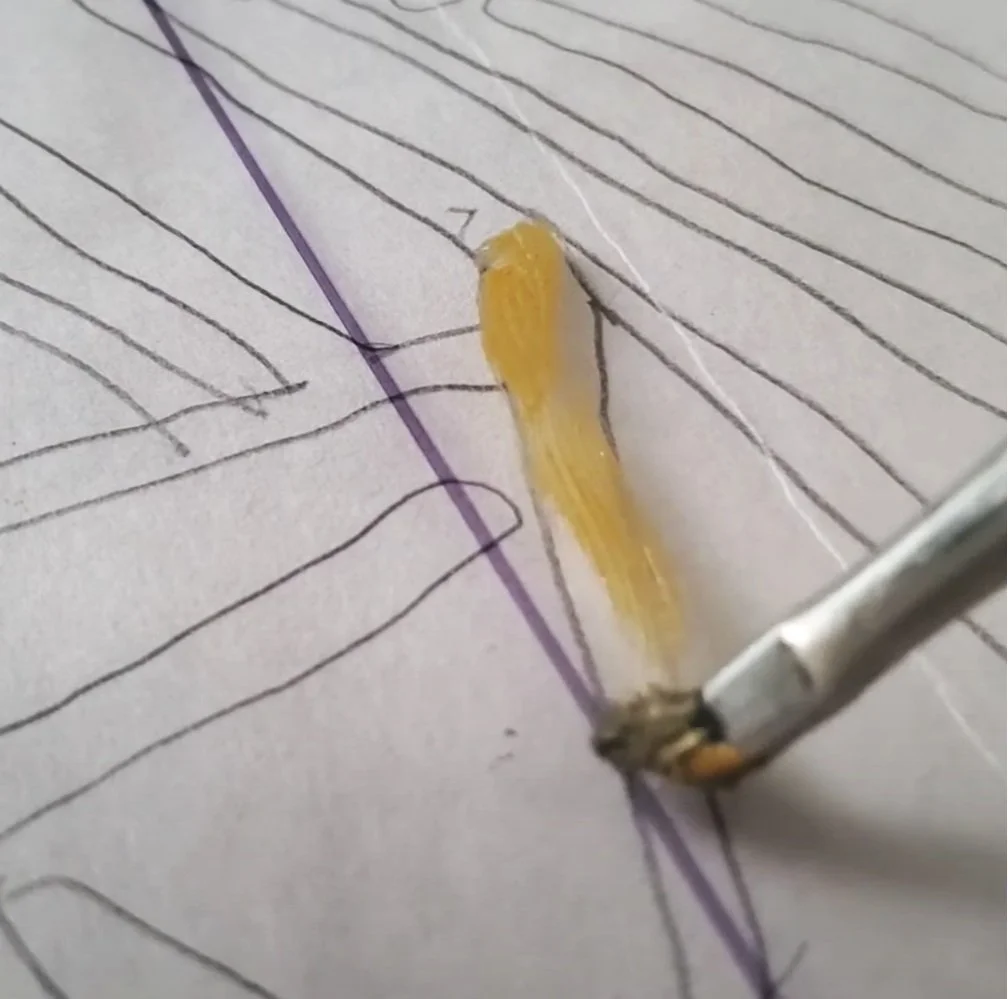Monotype/Monoprint
Painting and Printing together
Similar words, different approaches.
Printmaking has a reputation, when it has a reputation, for having a lot of steps, and sticking to its traditions. (There are lots of good reasons for that, which we will not talk about now.)
The monotype and monoprint, as finished works, gained popularity as a response to this complexity. A way in to printmaking for many artists and students, making marks freely and directly - monotype, and monoprints by extension, was shared more widely as another expressive language for artists, especially painters, to explore technique and imagery within the structure of the printed plate. It gave printmakers a way to work through ideas and imagery quickly and spontaneously (not typical attributes of printmaking processes, which is cool too).
Two layers - one in blue, applied with a brayer and using a rag to wipe away ink to reveal the white of the paper, another layer brushing on many colors of ink. Copyright Tikva Lantigua.
A monotype is unique - a painting, a drawing, transferred from one surface to another, and all the techniques and effects that come with that. Applying ink or paint to a smooth surface that has no other repeatable marks.
A monoprint, its more restrained cousin, is a unique impression from a repeatable matrix - a stencil, a carving, a series of incised marks that can be printed again and again. The application of ink can change, the color scheme, the mark making can change, but the composition does not. The underlying structure stays the same as you apply color to your stencil, linocut, or etching.
Brush ink on to a smooth, non-absorbent surface, wipe it away, impress textures into it, apply smooth sheens of color with a brayer. Screenshot from Monotype video, Tikva Lantigua
Three prints in progress using the same, hand-cut vase stencil, some printed many times with different applications of ink. Prints and photo by Tikva Lantigua.
Three paper stencils lined up on a plexiglass plate, awaiting ink. Photo by Tikva Lantigua.
Lots of opportunity for variation, and reflection, spinoffs, and edging into new images that spring from that repetition.
Full length monotype video for people who like watching people work. Artwork and video by Tikva Lantigua.
Monoprinting with stencils
Cutting paper is one of the simplest ways to make a repeatable image, and you can do it in a fully stocked printshop, or at your kitchen table. Using simple stencils to explore printmaking, from layering inks, to thinking in reverse (everything prints backwards!), masking areas to radically change what you thought your image would be, and creating multiple stencils to build an image up from one color to three - that’s what I’ll be sharing in my upcoming monoprinting classes at my local art center.
More prints using different combinations of color and the same two or three stencils, plus hand-drawn elements. Prints and photo by Tikva Lantigua.
A multiple layer monoprint using two stencils made by a student in the winter of 2022 Monoprinting with the Basics class.
Print made with stencils, a ghost image left over from a previous impression, with added brushwork.
If you’re local to The Art Place in Marietta, GA and hoping to get a feel for printmaking in a low stakes environment with very relaxing music, check out the offerings coming this January, and the supply list (for Winter I, printing on an etching press).
Bless you,







